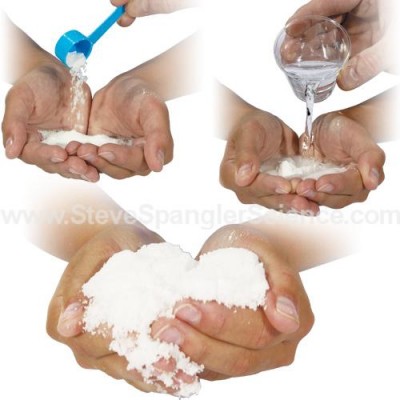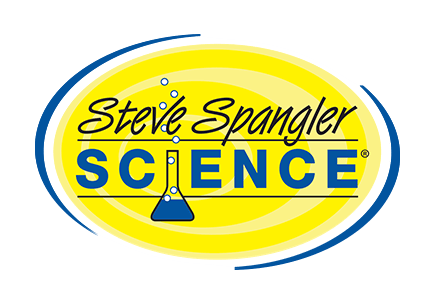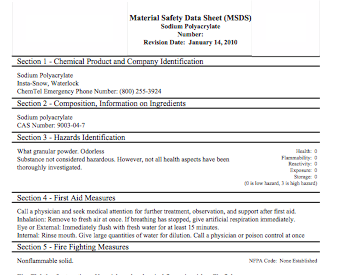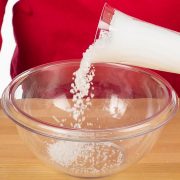Claims Made on Facebook Can Damage a Teacher's Reputation and Ultimately Hurt Students
We received an alarming call Wednesday morning. A parent in the Tyler, Texas area read a Facebook post from a friend with a shocking claim that his daughter ate some fluffy Insta-Snow and, at the hospital, her blood alcohol level was 2.0.
The first thought that goes through your mind is about the child’s safety and well-being. We are told by school officials that the child is doing fine, irrespective of the actual cause of the alcohol poisoning. Based on the chemical composition of Insta-Snow, there is no alcohol in this product nor does it break down to produce alcohol as a byproduct in a person’s stomach. In other words, it’s not possible that the cause of the child’s extremely elevated blood alcohol content was from eating a handful of a non-toxic, superabsorbent material commonly found in the lining of a baby diaper. Of course, not all fake snow is made out of the same material. If a doctor contacted Poison Control and requested information about “fake snow,” it’s possible that the results could vary greatly. Some fake snow comes from an aerosol can and is used to decorate windows, for example. Other forms of fake snow are made from ground up pieces of Styrofoam, potato flakes, soap shavings or even the superabsorbent material found in a baby diaper.
It’s important to note that Insta-Snow is not a food and is not meant to be eaten, just like crayons are not meant to be consumed. It is safe to touch, squeeze through your fingers and experiment with as instructed by the activity guide. As with all science related products, adult supervision is required.
For the people who aren’t familiar, Insta-Snow® powder is a substance that absorbs 300-500 times its weight in water. When a small scoop of this powder is added to water, the mixture erupts into a material that looks and feels like snow. The product is commonly used by teachers in classrooms to explore the properties of matter, demonstrate the conservation of mass and to explore the superabsorbent material found in baby diapers.

Insta-Snow® is a non-hazardous material that is a safe for children to use and experiment with adult supervision. Due to the widespread use of this product, Insta-Snow® powder is required annually to pass testing standards, especially when it comes to the use of it in the toy category.
Within hours of that post going up on this person’s Facebook wall, our office was hit hard with calls from people requesting the MSDS (Material Safety Data Sheet) product information and testing results on Insta-Snow® powder, and demanding answers. Without question, all of the product safety information was e-mailed to everyone within minutes of the request. The MSDS clearly shows that the product is not considered hazardous. It’s easy to understand why the medical professionals and authorities who contacted our office and received the official product testing documentation immediately came to the same conclusion.
If you have never read a Material Data Safety Sheet, the verbiage can be alarming with regard to first aid measures and or personal protection procedures. For example, the MSDS for ordinary table salt warns consumers to “wear chemical splash googles, chemical-resistant gloves and a chemical-resistant apron” whenever making contact with sodium chloride… or table salt. Statements that warn consumers to “restrict unprotected personnel from the area” or to “start artificial respiration if breathing has stopped” can scare anyone, especially a concerned parent, until you realize that the chemical in question is table salt. Does anyone really wear goggles, gloves and an apron when salting their French fries? Probably not. The lesson here is that an MSDS may advise the most extreme measures for one’s personal protection, but common sense may suggest a different action.
As teachers of science, we have our work cut out for us when it comes to teaching our students, parents and surrounding community members how to think more critically and use basic science facts and problem-solving skills to arrive at well-informed conclusions.






This story reminds me of the “dihydrous oxide” scare, where parents were frightened into a tizzy by H2O, aka water. A scary, unfamiliar “science-y” name and the claim that inhalation of the stuff causes numerous deaths (drowning) made parents demand the removal of all dihydrous oxide. Lol.
As a professional who has been involved for 28 years in the manufacture, use, and distribution of superabsorbent polymers and, in particular, sodium polyacrylates, I want to share some basic information. These absorbent polymers have been used mostly in baby diapers and other disposable absorbent pads for over 30 years now in the US. There have been many studies on the safe handling and use, including some metabolic studies in case of ingestion. Over the years, several accidental ingestions have occurred and been reported. The only reported effects from a few ingestion cases have been possible cramping with minor diarrhea. Inducing vomiting was often the medical protocol that medical personnel applied first to cases. Most have reported no lasting ill effects, just concern and worry over what they had just accidentally ate. Alcohol intoxication from ingestion of just superabsorbent polymer is very impossible. Superabsorbent polymers, or the materials used to make them, are not derived from ethyl alcohol or any alcohol. There is no possible path to alcohol residue from the decomposition of these polymers. In fact these polymers are not digestible for the most part.
I do not ask anyone to take my word for it. As with previous cases of ingestion, we advised them to do the following:
1. Contact a physician and tell them of the ingestion of sodium polyacrylate CAS # 9003-04-7 a.k.a. superabsorbent polymer, poly-acrylic acid, sodium salts and 2-propenoic acid polymer, sodium salt.
2. Contact The Agency for Toxic Substances and Disease Registry (ATSDR), based in Atlanta, Georgia, 1- 800-CDC-INFO (800-232-4636). Give them the same information. Better yet have your physician contact them to be better able to advise and treat you.
3. For further information contact The Institute for Polyacrylate Absorbents (IPA), an industry association whose mission is scientific research and information concerning the safe manufacture and use of polyacrylate superabsorbent polymers, based in Washington, DC.
Superabsorbent polymer is a safe, nonhazardous product that helps make our lives more convenient in several ways. There are far more toxic substances under the average kitchen sink. Still they are not for ingestion and all cases need to be taken seriously with complete disclosure so that no one is harmed and treated as may be needed.
I just saw this posted in the newspaper. I don’t understand why people are making a big deal out of the diaper polymer. It’s been around for years and so much testing has been done on it. It seems impossible that alcohol could come from the Instant Snow polymer.
http://www.news-journal.com/panola/news/concern-follows-online-comment/article_99c48cf3-43a4-5e0d-a440-e86abcfca476.html
You stated that you were told by school officials that the child was doing fine. I was under the impression that no school is authorized to give out any information on a student unless you are a parent or legal guardian.